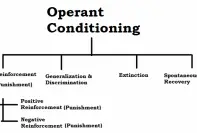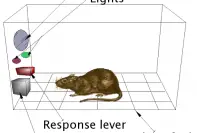The process of establishing a behavior that is not learned or performed by an individual at present is referred to as Shaping. It can also be defined as a conditioning paradigm used primarily in the experimental analysis of behavior. The method of reinforcing successive approximations in order to teach a behavior has been found to be effective in both humans and animals.
We have already discussed, in detail, about Shaping and process of Shaping in the previous article. Here, we will thoroughly study the examples of shaping of behavior to understand the whole process better.
Over the years, psychologists have pointed out number of different examples of shaping.
- Language Development
- Getting a rat to press the lever (B.F. Skinner)
- Animal training
- Rehabilitation (O’neil & Gardner, 1983)
- Voice Volume (Jackson & Wallace, 1974)
- Self-injurious behavior (Schaeffer, 1970)
These points mentioned above can also be considered to be applications of shaping a behavior. Breaking down the Example 2 from the previous article,
Example 2: Let’s say a teacher is trying to teach Johnny to speak in front of the whole classroom. Given that Johnny is a shy kid, he wouldn’t be able to give a speech right away. So, instead of promising Johnny some reward for giving a speech, rewards should be given to behaviors that come close. Like, giving him a reward when he stands in front of the class. Next, when he goes in front of the class and say hello. Then, when he can read a passage from a book. And, finally when he can give a speech. The whole point is for rewards to be successive and it’s not possible to retain rewards with previous responses. In this way, shaping of behavior can be done.

Goal: To teach Johnny to speak in front of the classroom.
Step 1: Shy Johnny is made to stand from his bench. This is the first action that is reinforced.
Step 2: Johnny is made to stand in front of the classroom, for at least 5 seconds. Then he is reinforced.
Step 3: Now, Johnny must stand in front of the class and say “Hello” before being reinforced.
Step 4: Johnny must stand in front of the class, say Hello, and introduce himself before he can be reinforced.
Step 5: Now, Johnny must follow all the steps above and read a passage from his book in order to get his reward.
Step 6: Johnny gives a speech and is then reinforced.
All attempts to shaping of behavior must follow appropriate guidelines in order to work effectively. Here are the guidelines mandatory for each examples.
- Pre-decide the desired behavior.
- Pre-decide the reinforcer.
- Have a proper plan about successive approximations leading to the terminal behavior. Start with the behavior that the learner can already perform and is closest to the desired final behavior.
- Carry out the plan.
- Learner must be well aware about the process beforehand.
- Reinforcing must be immediate for each successive approximations starting from the first behavior.
- Until and unless the learner has mastered previous behavior, the learner shouldn’t be moved to a new approximation. Learner must succeed at least 6 out of 10 times.
- Reinforcement must be equal in each step.
- Add more steps to reach the final behavior if the learner is having difficulty moving up the ladder.
Carrying out the process of shaping doesn’t always need to be pre-planned step-by-step procedure. Although the technique is used to teach new behaviors to disabled people and is also used in animal training, it’s also constantly occurring in our daily life. For instance, while learning ballet, learning a new language, learning a new port, learning to drive and much more. Let’s consider one more example to see how shaping works in real life.
Next Example
Goal: Teaching French language to Johnny.
Step 1: Johnny is made to introduce himself in French, for which he is reinforced.
Step 2: Johnny talks about himself and his family in French.
Step 3: Johnny must make a conversation with a colleague in all French. Only then will he be reinforced.
Step 4: Johnny gets a reward if he only speaks in French throughout the period of the class.
Step 5: Johnny speaks in French without any errors and thus receives his reward.
As you can see from the above example, this is something that happens in our daily life. That’s precisely the manner in which a student can learn a new language. And, if you want to experiment the process, you’ll find the aforementioned guidelines to be extremely helpful.




